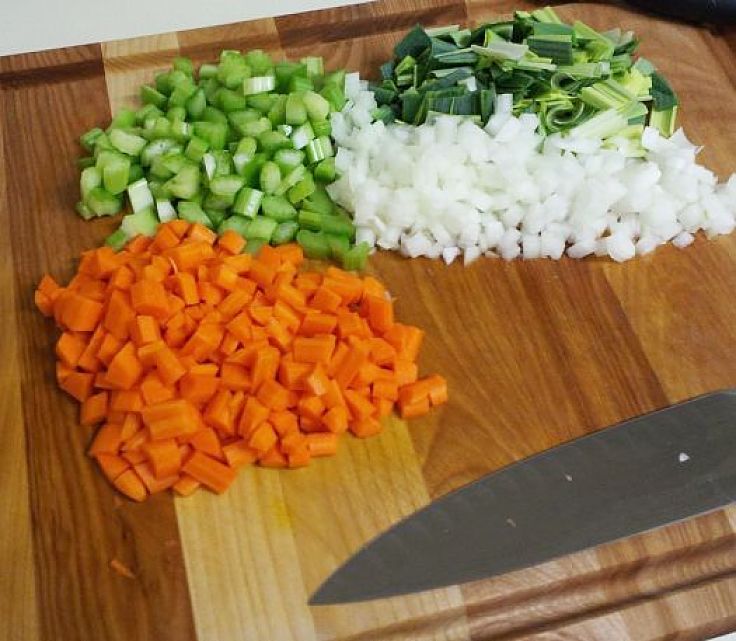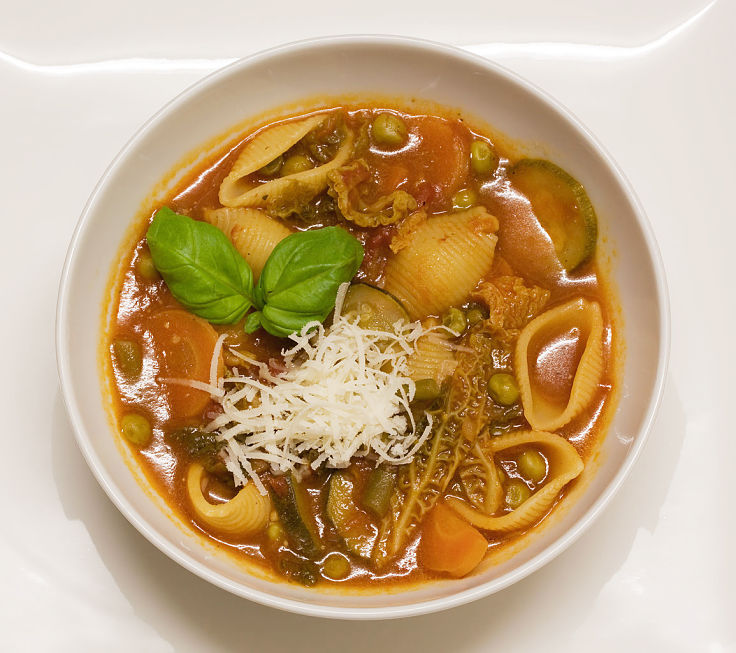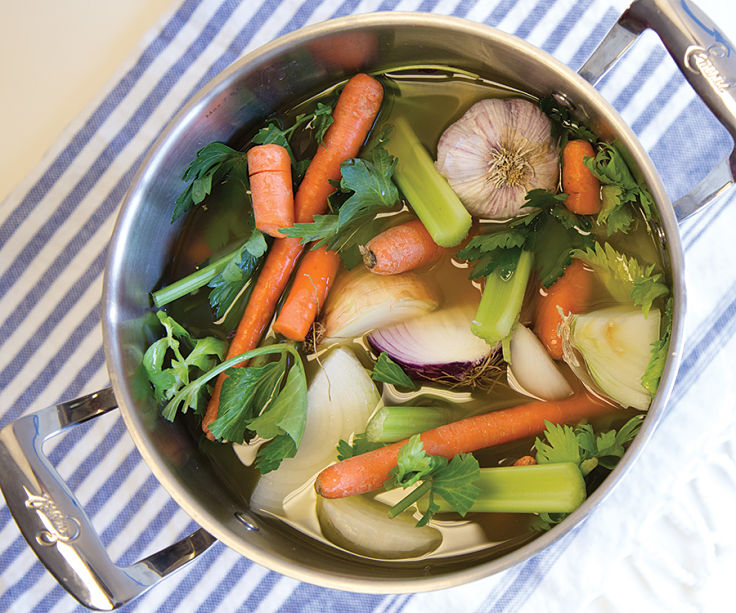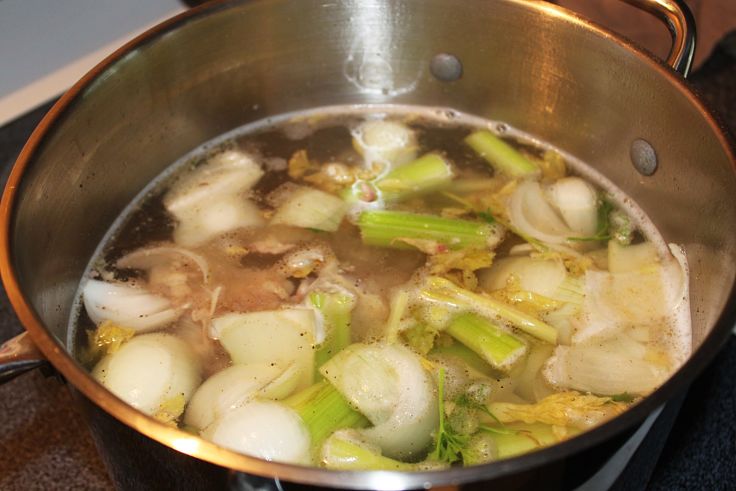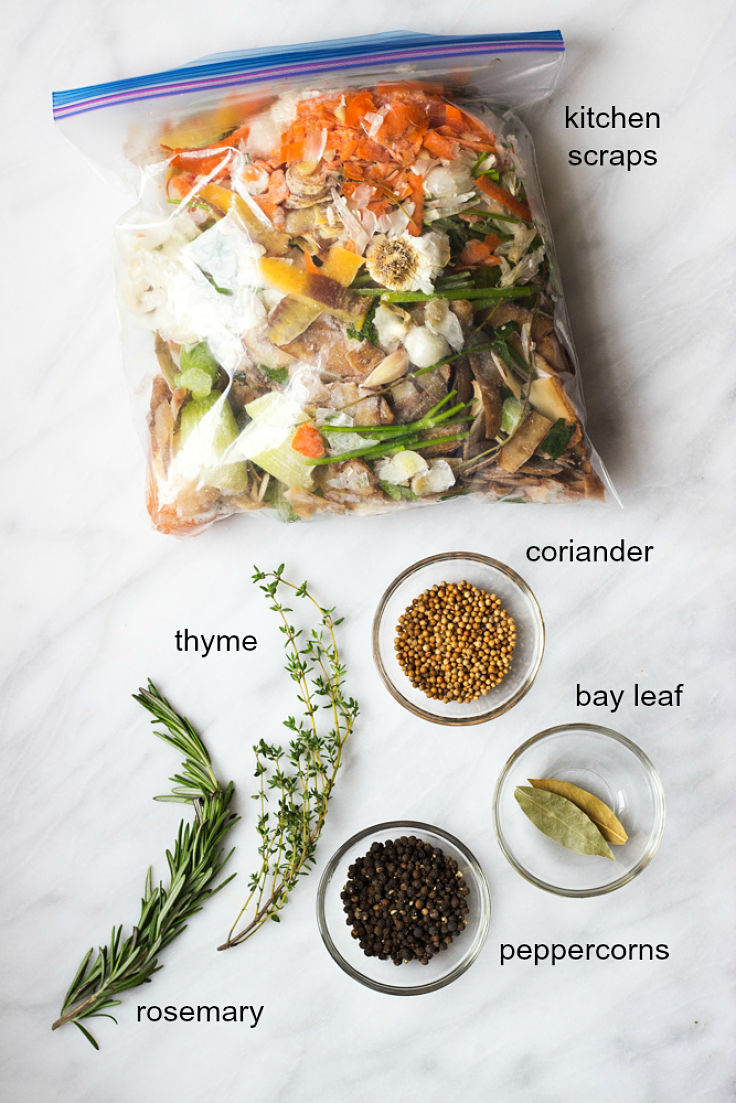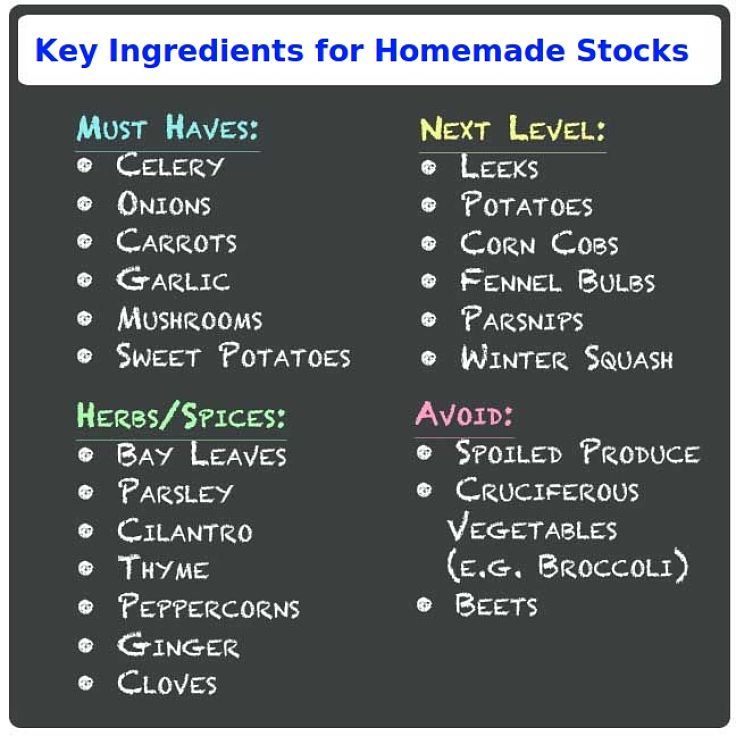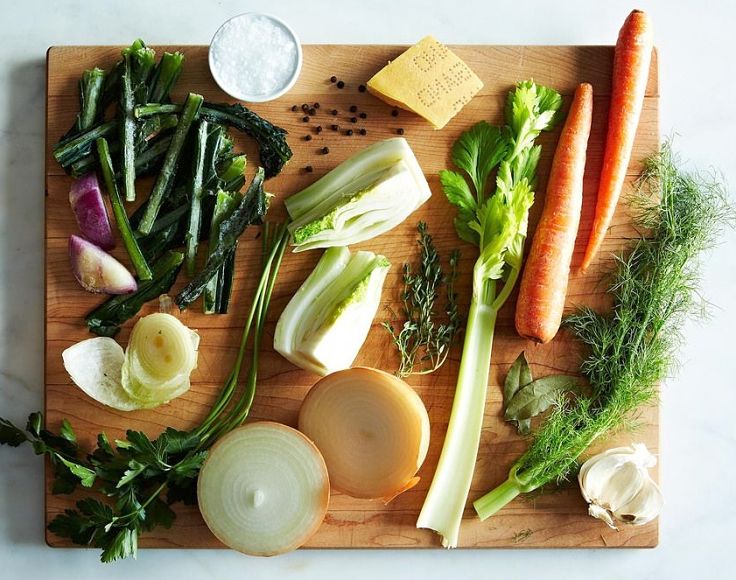Homemade Chicken Stock Recipes - Beef, Vegetable, Seafood Broths
You can buy ready-made stock and use and variety cubes, powders and use concentrates to make stock. But if you look at the labels you will notice that these concoctions are full of chemicals, artificial colorings and flavors and many strange additives.
Any resemblance to real food may be an accident! There is nothing like homemade traditional food for depth of flavor, aroma and fine tasty meals.
If you love cooking and are proud of the food you cook, why ruin it with an artificial stock full of chemicals. The main reason many people don't make their own stocks is time.
But stock keeps well and can be made in bulk and frozen in milk cartons and containers. You can freeze portions with just the right amount of stock for the dishes you make, such as curries and stews (2-3 cups), pasta sauce (1 cup).
Most of the time taken is passive time not active time, which is restricted to about 30-45 minutes per batch.
It takes no time at all to add some vegetables to some left-over meat, and to set it simmering away for 1-2 hours. Then, all you have to do to skim, sieve, cool and skim off the floating fat and pour into containers for freezing.
To use the stock all you need to do is to draw on the bulk pot stored in the refrigerator or to thaw one of your frozen portions. This article will help you get started in making your own stocks and provides many useful hints and tips.
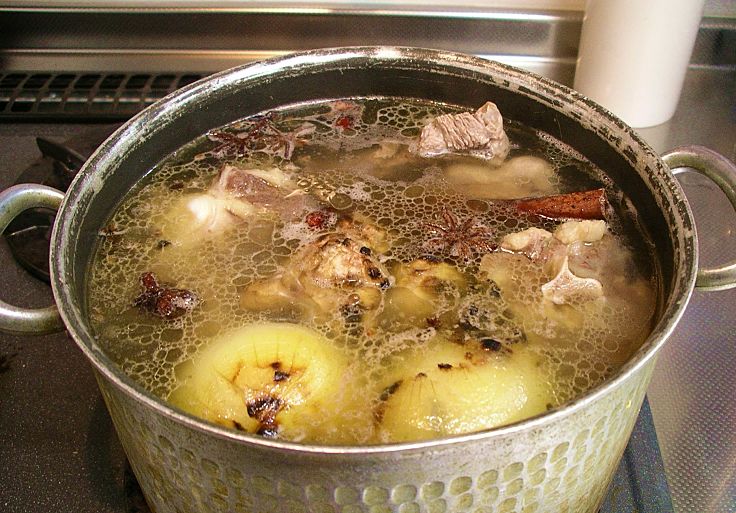
Basic Set of Ingredients for Homemade Stocks
The basic set of ingredients for most stocks are:
The basic set of ingredients for most stocks are:
► Water - You can also use the water left over from boiling vegetables or other foods
► Key vegetables such as celery, carrots, garlic, onion, leek, potatoes (usually)
► Aromatic herbs such as bay leaves, thyme sprigs, parsley, rosemary sprigs, sage (sometimes), tarragon, and often other more delicate herbs added at the last minute, such as coriander, mint or basil. Or you can use herb bunches such as a bouquet garni.
► Spices such as peppercorns and chillies. While optional, these ingredients boost the flavor of many stocks, but they don't suit all the dishes you want to make with the stock.
► Salt - Most stocks are relatively salty. You can use soy sauce, mirin, Thai fish sauce or other salty sauces instead of salt crystals.
► For meat stocks, you need left-over meat and chicken, off cuts and trimmings, or flavorsome raw cuts of meat such as chuck steak and gravy beef. Don't compromise on the taste by buying fatty meat or offcuts to save money. You can use bones, chicken 'frames', fish heads, and shrimp shells and heads and all sorts of other items to add to the stock. You can also use bacon bones, grilled or fried bacon, and various other items.
All these resources, including leftovers, can be stored in the freezer until you need them on the day you set aside to make the stock. You can buy many suitable meats, off-cuts and bones cheaply from you butcher. The stock is sieved and so all of these items are removed from the stock once the flavors have been extracted. The fat is also skimmed off.
Four Key Steps for Making Stocks at Home
1. Boil Vigorously and then Skim off the Residue
Most stocks are boiled once for 5-10 minutes or so. Lower the heat and skim off any froth or residue that floats to the surface. Sweep a large spoon across the pan to remove as much as you can.
2. Long Gentle Simmer to Extract the Flavors
After boiling, lower the heat to a gentle simmer. You want bubbles rising and occasionally breaking the surface. Cover the pan, as you want to retain liquid at this stage. A crock pot or slow cooker is idea if it is not being used for other things. This is really set-and-forget, for 2-6 hours (perhaps all day). Check every now and then, and top up the water level if necessary.
3. Strain or Filter the Stock
Once the cooking has been completed, remove the bones, meat and larger items using a slotted spoon or tongs. Then filter or sieve the stock to remove the smaller items, to leave a smooth, clear liquid. Cooked vegetables can be pressed through the sieve, or even blended if you want to thicken the stock. But freshly cooked or roasted vegetables are a better option for this. Set the stock aside to cook and scoop off any fat or residue that accumulates on the surface.
4. Reduce the Stock (Optional) and Package for Storage
You can concentrate the flavor and save space by, further heating the stock to render it down to half volume. Chilled stock will keep in the refrigerator for 3-4 days, but don't leave it out at room temperature.
Freezing in suitable size blocks, means you can use it conveniently at a later date. Stock lasts for several months in the freezer.
Basic recipes for Various Types of Homemade Stock
Rich, Thick Brown Stock Made with Meat
This stock includes raw beef, veal, lamb, pork, including left over roasts. It also includes bones ham bones, giblets and various vegetables. These heavy brown stocks are ideal for rich soups, curries and stews. Don't make the mistake of buying fatty low grade meats for this, as this can be false economy. Better to focus on smaller amounts of meats offering strong flavours such as chuck steak and gravy beef. You can intensify the flavors by frying the meat in a large pot or roasting in the oven. This is not necessary but intensifies the flavors.
Brown Stock Recipe Made from Roasted Meat and Vegetables
Put 1.5kg (3lb) of meat and raw bones into a large roasting pan. Add 2 onions roughly chopped, 2 sliced celery sticks and 2 carrots to the pan. Roast at 200 degrees C (400 degrees F) for 45 minutes, turning once, until the meat and vegetables have started to brown. The meat can also be grilled.
Transfer to a large saucepan, pot or Dutch oven, add aromatics such as a bay leaf, or thyme, and then cover with cold water. Add salt and pepper. Boil for 15 minutes. Skim off any froth or residue. Then simmer gently for 2-4 hours for poultry or pork, or 4-8 hours for red meat and bones. Then sieve, cool and scoop off any fat. Adjust the salt and add fresh herbs if appropriate.
Thin Light Stock Recipe (White Stock) Using Poultry and Seafood
This stock is made with chicken and other white meats and the browning of the meat is omitted. This stock has a paler color and a milder flavor that suits chicken and seafood dishes, lighter soups and Asian noodle recipes.
Place the chicken, raw bones and 'chicken frames' in a heavy pan with vegetables and aromatics. Cover with water. Bring to the boil, skim off the foam and then simmer for 1 1/2 - 2 hours. Cool, sieve to remove the bones and vegetables and remove any fat the accumulates on the surface.
Fish, Shrimp and Seafood Stock Recipes
Add fish heads, trimmings, left-over fish, or fish pieces and bones to a heavy pan. You can also use shrimp heads, shells, whole mussels, including the washed shells, and other seafood pieces. Add vegetables and mild flavored aromatics and water to cover.
Simmer for about 30 minutes. Don't simmer for longer than this as the stock can become bitter. You can use Thai fish sauce or light soy sauce instead of salt. Sieve to remove solids.
Vegetable Stock Recipe
Chop 2 carrots, 2 celery stalks, 3 onions (or 2 onions and a leek), a mixture of vegetables, garlic, peppercorns and aromatics and few mushrooms. Add to a heavy pan and cover with water. Simmer for about 30 minutes. Sieve to remove solids and adjust the taste by adding more salt. Add fresh herbs if desired. Adjust the taste with salt and freshly ground pepper.
